Art & Tech
How Artist Pablo Delcan Went Viral With Non-A.I. Image Generation
He rivals A.I. tools with quick sketches based on requests from the public.
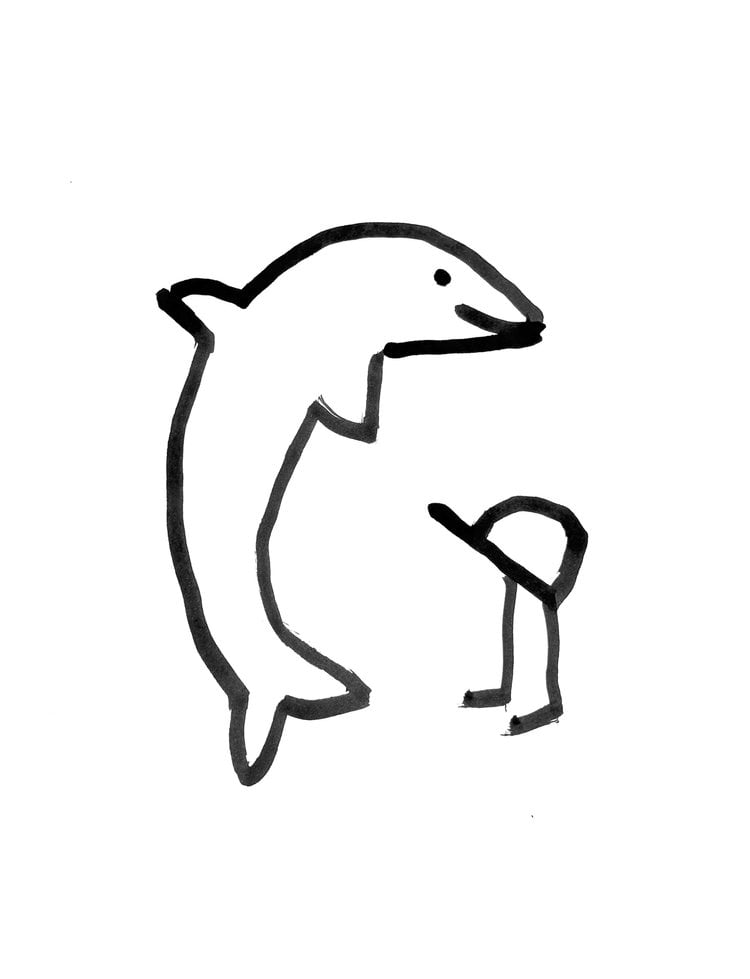
At a moment of peak popularity for A.I. image-generating technology, from the increasing influence of Dall-E to Adobe Photoshop’s incorporation of new image-generating tools, graphic designer and artist Pablo Delcan launched a rival image-production model. Prompt-Brush calls itself “the very first non-A.I. generative art model”. Using prompts sent in by visitors to the website via an online form, Delcan produces the images by hand. He runs the design studio and creates the artworks from his space in New York’s Catskills.
Since launching in January, Prompt-Brush has shared hundreds of brush and ink artworks made by Delcan, the first of which was inspired by “a dolphin with a baseball hat” and one of the most recent was “an artist looking for purpose”. Other surreal prompts have included “two worms sipping wine”, “a ghost eating a shoe”, and “metal pipe falling sound effect”. The drawings take Delcan around a minute to complete, and as of February 1 the image request queue stands at 4,574.
According to its website, Prompt-Brush 1.0 “seeks to contribute to the conversation about the value of the human experience in the creative process, emphasising the significance of personal interpretation and process”. It is designed to juxtapose “the human element with the A.I., exploring both its merits and its role”.
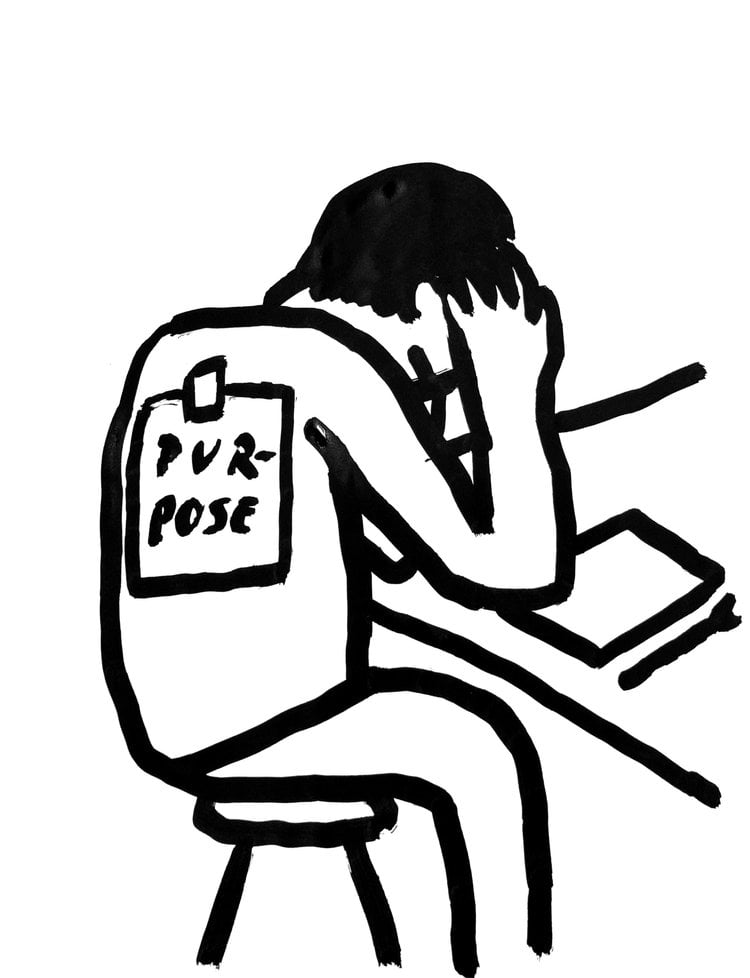
Pablo Delcan, an artist looking for purpose. Copyright Delcan & Co.
It goes on to describe Delcan’s process: “a brush is used to draw by dipping it into black ink and then moving it across a piece of paper to leave marks”. A diagram of a brush has three labels, “handle”, “brush”, and “ink goes here”. Another tongue-in-cheek website graphic compares Prompt-Brush 1.0 to generative A.I. program Midjourney in its capabilities in “detail” “accuracy” “insecurity” and “vibrancy”. The website also includes a graph of his daily progress.
Prompt-Brush 1.0 went viral in January, hitting the headlines of It’s Nice That and Forbes. We caught up with Delcan to see what’s coming next for his non-A.I. image generation scheme.
How would you describe your practice?
I run a small design studio from a barn that sits on a field of hay, a couple of hours by car from New York City. I take on a wide range of projects, many of them self-initiated, from book design and movie titles to making kites and ceramics.
Where did the idea for Prompt-Brush come from?
I’ve been an early adopter of A.I. generative image models, using them to help me sketch ideas, iterate on visuals, or help me retouch images. It’s been wild seeing how powerful these tools have become from one month to the next. Over the last year, I’ve been commissioned to make dozens of illustrations for articles about A.I., most of them quite depressing or plain short-sighted. Prompt-Brush really started as a joke to satirize the conversation around A.I. I posted on my Instagram account that I was unveiling the very first non-A.I. generative art model and that anyone could try it out by just sending me a prompt. So, I would get a few dozen prompts from friends, and I’d draw them as quickly as I could with a paintbrush on paper and upload them back onto my Instagram to send it to them. It wasn’t meant to last more than a day.
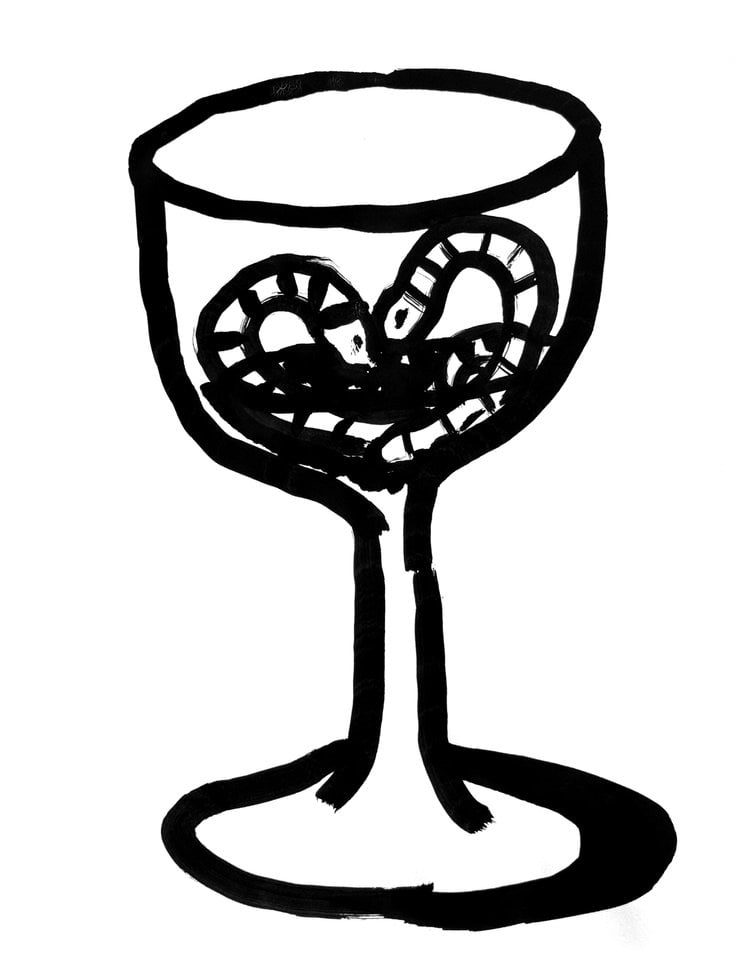
Pablo Delcan, two worms sipping wine. Copyright Delcan & Co.
How did it feel when the requests kept pouring in?
It felt great, and it turned Prompt-Brush into a real project and experiment. Now, with thousands of prompts pouring in, I had to sift through them. I could analyze the prompts, figure out the speed it takes me to make these, and understand the different kinds of prompts being sent in—a wild amount involving cats. That’s when I decided to take this seriously and see what I could learn from this experience. I want to understand for myself the real takeaways that differentiate what I do from what a real A.I. generative image model does.
How is it going now after going viral back in January?
The submissions are still coming in, reaching different parts of the world. Yesterday, I had to translate a few dozen of them from Italian and a few from Russian. The project is finding its way around the world at its own pace.
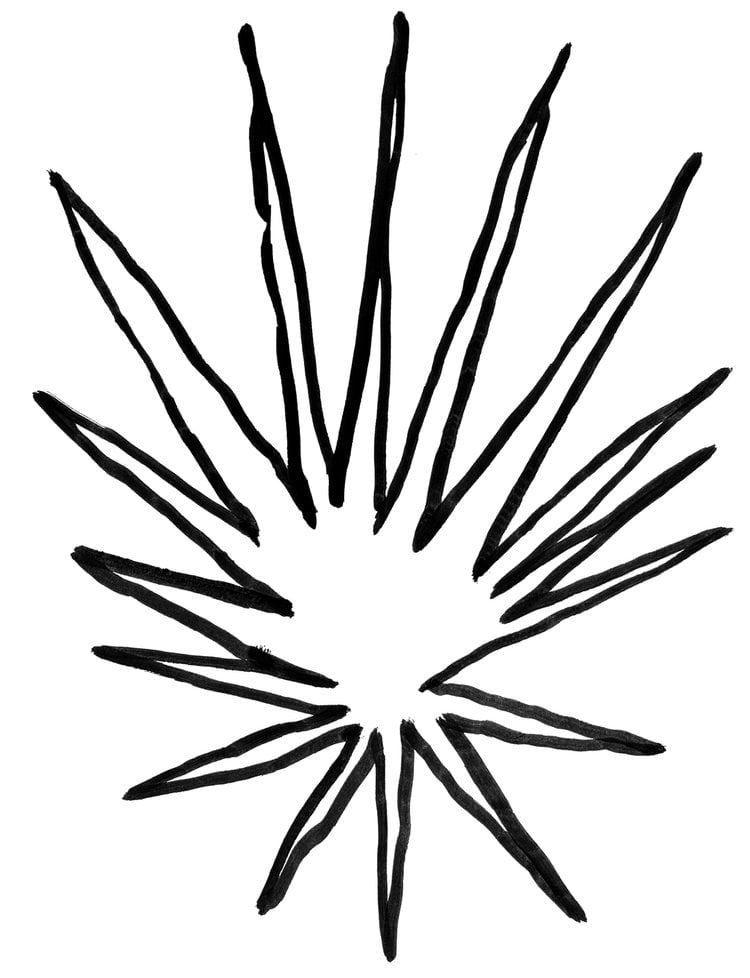
Pablo Delcan, metal pipe falling sound effect. Copyright Delcan & Co.
Has the project changed your thoughts about A.I. technology in art?
Absolutely. I’m starting to really understand my place in the process of creating things as well as the place for A.I. technology as a tool. I’m more optimistic about it, and I think the future of art is still spearheaded by humans with a really incredible companion to help us get a bit further, faster.
What’s next for you? What’s next for Prompt-Brush?
I don’t know. I’m still learning from the project, and I don’t want it to end just yet. I’m wondering what Prompt-Brush 2.0 would be like if it were ever to exist. Maybe it’s bringing in someone else into the project or it could just be me buying a new brush.
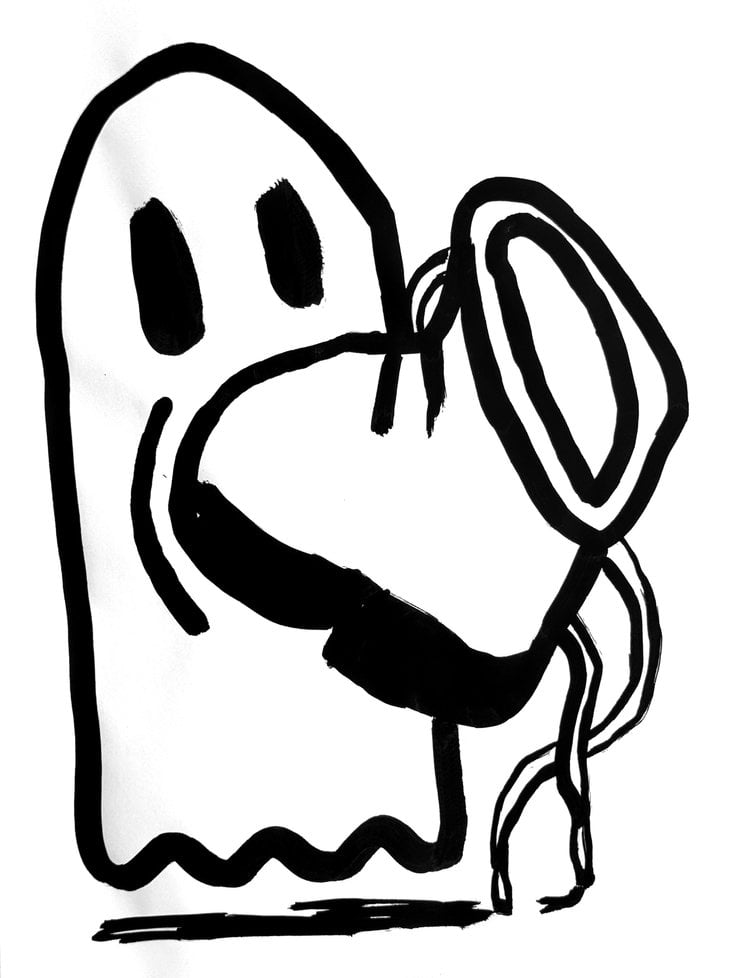
Pablo Delcan, a ghost eating a shoe. Copyright Delcan & Co.





